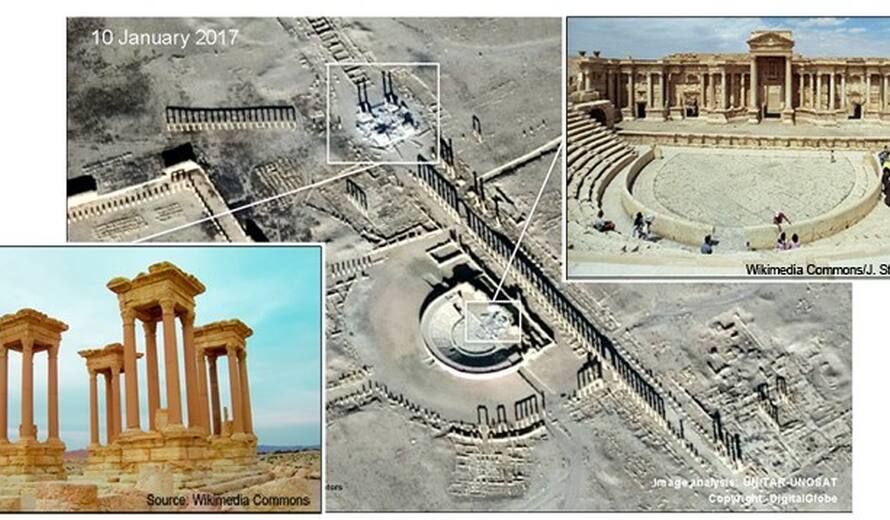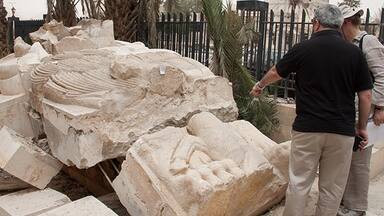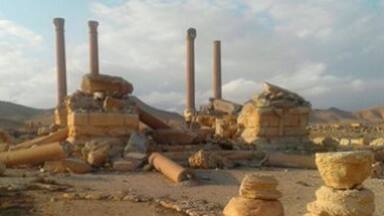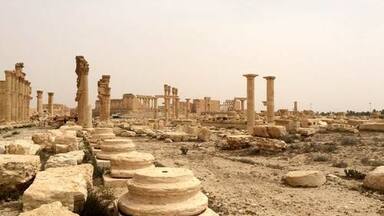UNESCO Director-General condemns destruction of the Tetrapylon and severe damage to the Theatre in Palmyra, a UNESCO World Heritage site
UNESCO received several reports and satellite imagery released today by UNITAR-UNOSAT confirming the destruction of Palmyra’s tetrapylon and parts of the theatre’s proscenium.
“This destruction is a new war crime and an immense loss for the Syrian people and for humanity,” said UNESCO Director General Irina Bokova. “This new blow against cultural heritage, just a few hours after UNESCO received reports about mass executions in the theatre, shows that cultural cleansing led by violent extremists is seeking to destroy both human lives and historical monuments in order to deprive the Syrian people of its past and its future. This is why the protection of heritage is inseparable from the protection of human lives, and we must all unite to put this at the center of all efforts to build peace,” Ms. Bokova added.
The tetrapylon was a monument marking a major road intersection along the colonnaded street of Palmyra. It was a testimony to the grandeur of the era around 270 AD, during which Queen Zenobia had reached the height of her power.
“The tetrapylon was an architectural symbol of the spirit of the encounter and openness of Palmyra – and this is also one of the reasons why it has been destroyed. Its position and shape are unique in ancient architecture and testified to the specificity of Palmyrene identity, as a source of pride and dignity for all Syrians today,” declared the Director-General.
Palmyra’s theatre, dating from the 2nd century AD, is built in the center of a semicircular colonnaded piazza located to the southwest of the main colonnaded street. Satellite images show damage at its formerly well-preserved proscenium wall, decorated with ten curved and nine rectangular niches placed alternately.
UNESCO reiterates its calls on the international community to stand united against cultural cleansing.
An oasis in the Syrian desert, northeast of Damascus, Palmyra contains the monumental ruins of a great city that was one of the most important cultural centers of the ancient world. From the 1st to the 2nd century, the art and architecture of Palmyra, standing at the crossroads of several civilizations, married Greco-Roman techniques with local traditions and Persian influences. Palmyra was inscribed on the UNESCO World Heritage list in 1980 and has been on the list of World Heritage in Danger since 2013.
Media contact : Agnès Bardon, UNESCO Press service. Te : +33 (0) 1 45 68 17 64, a.bardon@unesco.org
More information on UNOSAT: http://www.unitar.org/unosat/node/44/2537



